Wildlife Wonder: The Ins and Outs of Ethical Nature Photography
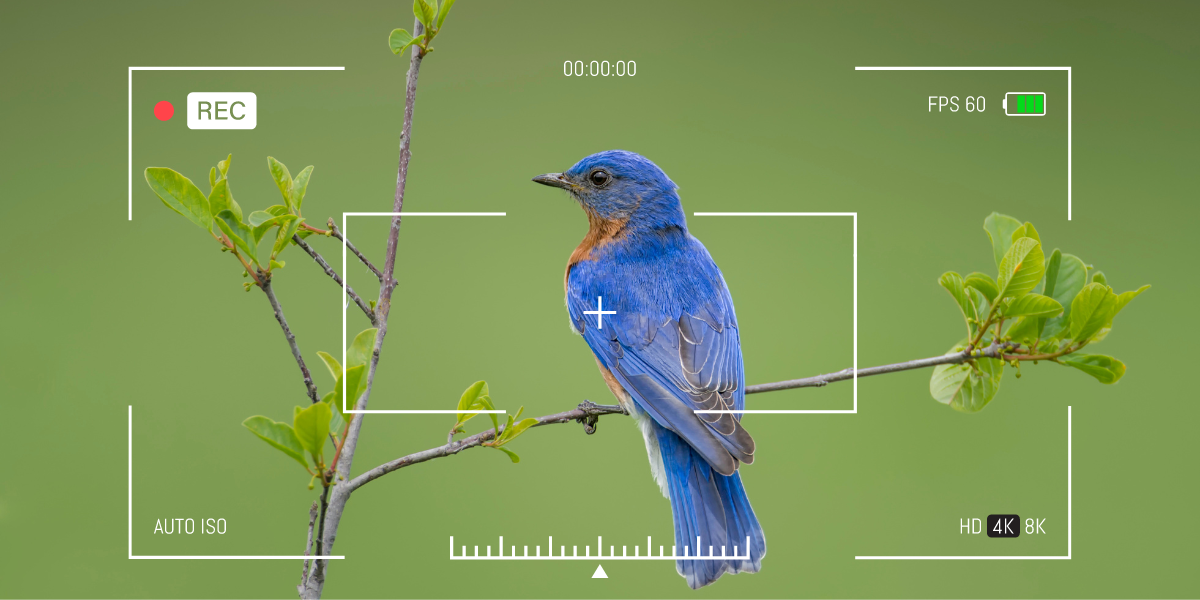
From full color to black-and-white, posed to candid, narrative to abstract, photographs have a unique ability to tell a story, kindle emotions, raise awareness, and even inspire action. Captured images have power – and this is certainly no less true of nature photography.
In the words of the famous landscape photographer Ansel Adams, “A photograph is usually looked at – seldom looked into.”
As we celebrate NCWF’s 6th Annual Photo Contest, we encourage you to look deeply into photographs of nature and the nuanced stories they represent:
- Within a photo of a lone red wolf is the story of an entire species crippled by habitat loss, vehicle collisions, gunshot mortality, and coyote hybridization.
- A shot of discarded bycatch off the NC coast speaks to a tragic issue in marine fisheries management and the need for further marine species protection.
- A photo of a small elk herd in the Blue Ridge Mountains represents a timeline of overhunting, habitat loss, and the ever-present threat of disease.
- An image of a vibrant wildflower meadow growing in the aftermath of a prescribed burn provides hope for the future of science-based conservation – life emerging from the ashes.
You can experience the profound impact of nature photography both through observation of others’ work and by practicing nature photography, yourself. In this blog, we will cover the importance of nature photography, how you can get started, and how to avoid the pitfalls of unethical wildlife photography practices.
Why Wildlife Photography?
Creative Expression:
Though it may seem obvious, one of the main reasons people get involved in nature photography is the opportunity it provides for creative expression. The ability to capture the beauty of natural settings and the wildlife within them is a captivating and exhilarating exercise, one that requires patience and a keen, artistic eye.
There is no shortage of nature photographers, and you can see their work on full display across social media platforms, art journals, and galleries. But make no mistake – nature photography is not merely a simple hobby. Professionals often work for years straight to obtain a specific photograph, and some photographers go a whole lifetime in pursuit of one particular shot.
Remember – patience is key!
Building Community
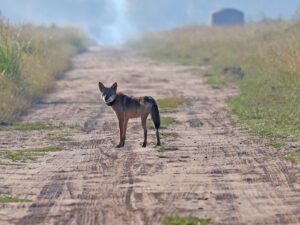 Beyond creative expression, photography has the power to draw people together. For instance, someone who lives at a distance from the Southeastern United States may have never heard of the endangered red wolf until stumbling across a photo on Instagram, kindling an interest in this fascinating species and the community surrounding their conservation.
Beyond creative expression, photography has the power to draw people together. For instance, someone who lives at a distance from the Southeastern United States may have never heard of the endangered red wolf until stumbling across a photo on Instagram, kindling an interest in this fascinating species and the community surrounding their conservation.
The health of a community requires recruitment and inclusion. Inclusion requires common interests and shared passion. Fortunately, photography is a perfect way to instill passion and curiosity, starting the dialogue around these shared ideals. All it takes is someone driven enough to capture an image, and a community to share it with!
You can find such a community in your local NCWF Community Wildlife Chapter. By engaging in hands-on habitat restoration events and participating in educational opportunities centered on wildlife and habitat conservation, you’ll discover a vibrant community that shares your passion for wildlife.
Inspiring Action
Photographs possess a special power to stir action in viewers by appealing to their emotions. For instance, a photograph of a litter-filled waterway or an oak grove overwhelmed by invasive species might inspire individuals to join local efforts for trash cleanups or invasive species removals at their local park. Similarly, an image of a monarch butterfly gracefully perched on blossoming milkweed showcases the beauty and significance of native plants, emphasizing the importance of their preservation.
Never underestimate the impact a photograph can have!
How to Practice Wildlife Photography?
Ethics
Nature photography possesses the potential for significant positive impact, but unethical practices can also result in harm. Being well-informed about the wildlife and habitat you interact with is crucial, as it directly affects their wellbeing.
It is important to ensure you maintain a safe distance from all wildlife at all times. One of the most significant errors wildlife photographers can make is getting too close to the wildlife. Close encounters with wildlife presents numerous hazards for both the photographer and the wildlife being photographed, including:
- Direct Impact on Wildlife and Photographers: Engaging in close interactions with wildlife can inadvertently lead to harm for both the wildlife/plants and photographers. It is important to learn signs and behaviors of distress from the wildlife species you are capturing; certain wildlife species may react aggressively when they feel threatened, making it essential to maintain a safe and non-intrusive distance to avoid any direct contact.
- Disruption of Critical Habitats: When photographers attempt to approach specific wildlife or plant species closely, they may unknowingly disturb crucial habitats such as nesting areas, food sources, mating territories, or bedding spots. Closing the gap between the subject and the camera can have unintended consequences on wildlife habitat. This includes taking photos from areas where human presence is restricted by authorities or property managers and taking photos outside of hours of allowed human presence. Please review federal, state, county, and private property regulations and observation guidelines before planning your visit to wildlife viewing areas.
- Wildlife Stress: Many wildlife species already face stress due to habitat loss caused by the encroachment of urban development, which forces them into smaller territories. Even when photographers aim to avoid direct contact, their mere presence poses a significant risk of causing unnecessary distress to wildlife.
Be mindful of the distance between yourself and the wildlife you are observing, and always err on the side of caution. Ethical wildlife photography standards state that humans should maintain a minimum distance of 100 yards (about 8 school buses) from wildlife to prevent any potentially harmful situations or alterations of wildlife’s behavior. If you are intent on getting ethical close-up photographs of wildlife, you can invest in a zoom lens for your professional camera or even for your cell phone camera.
Composition and Practice
The beauty of nature photography, and photography in general, nowadays is that it has become incredibly accessible with little to no barrier to entry. With almost all cell phones equipped with capable cameras, capturing high-quality images is within reach – if you know how to use them!
Whether you are using a cell phone camera, or a high-dollar DSLR camera, here are a few tips and ideas you can implement to hone your craft and capture some powerful nature photographs.
- Study Up:
When engaging in nature photography, thorough preparation is essential. Take the time to study and understand your subjects. Whether you plan to focus on specific wildlife or just capture whatever you come across during your trip, research the habitat and species you’ll encounter.
Create a profile for the species you want to photograph or might encounter. Learn about their habitats, food sources, and how common they are in the area. Understand their camouflaging abilities and temperament. This knowledge will not only help you capture great shots but also deepen your understanding of the vibrant wildlife you seek to encounter.
2. Start Simple:
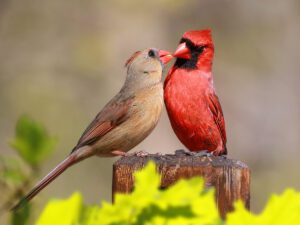 Capturing photos of wildlife can be challenging, but starting with simple subjects can be a great way to improve your skills. Set up near a bird feeder and try your hand at photographing songbirds and squirrels. Practicing in this controlled environment will help you develop patience, stillness, and the ability to capture clear shots of moving subjects while refining your creative style. Once you’ve honed these skills, you can take it up a notch and move on to the next challenge – like photographing hummingbirds at feeders, which are smaller and move much faster.
Capturing photos of wildlife can be challenging, but starting with simple subjects can be a great way to improve your skills. Set up near a bird feeder and try your hand at photographing songbirds and squirrels. Practicing in this controlled environment will help you develop patience, stillness, and the ability to capture clear shots of moving subjects while refining your creative style. Once you’ve honed these skills, you can take it up a notch and move on to the next challenge – like photographing hummingbirds at feeders, which are smaller and move much faster.
3. Use Tried-and-True Composition Tactics:
Photography is more than just pointing at a subject and pressing the shutter button. There are certain photographic concepts you can employ to capture the most aesthetically engaging photograph you can. Here’s how.
Depth of Field:
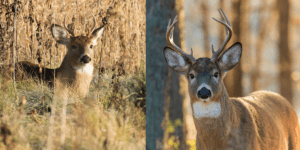
An example of deep depth of field (left) and shallow depth of field (right).
Depth of field in photography can be categorized into two main types: shallow and deep depth of field. Shallow depth of field involves having the foreground subject in focus, while the background appears blurry and out of focus. Conversely, deep depth of field focuses on the background subject, leaving the foreground blurred. Each type offers distinct uses and contributes to a unique aesthetic in an image.
Rule of Thirds:
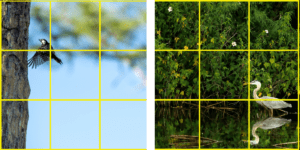
Two examples of rule of thirds.
The rule of thirds has long been acknowledged as a powerful compositional technique. It suggests that the most visually pleasing images often have the subject positioned off-center. One prevailing theory behind this effectiveness is rooted in our evolutionary tendencies: our attention is naturally drawn to subjects at the periphery of our vision. Such objects could potentially be predators or prey, prompting us to pay more attention to them.
This principle extends beyond photography and is evident in various mediums, including movies and TV shows. By dividing an image into thirds and placing the subject on the left or right third, leaving the other two-thirds for artistic utilization of space, you can employ the rule of thirds to create compelling and engaging visuals.
Linear Perspective:
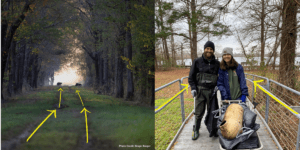
Linear perspective (or leading lines) come in a variety of forms! Arrows indicate leading lines used to direct the eye to the subject of the photo.
As creatures naturally inclined to follow the path of least resistance, humans also prefer visual stimuli that are easily accessible and identifiable. This inclination influences our consumption of visual media, making the concept of “linear perspective” or “leading lines” crucial in photography. An image can be strengthened by incorporating natural elements that guide the viewer’s gaze toward the subject. For instance, a tree branch leading the viewer’s eye to a focused bluebird at its base, a fenceline directing attention to a whitetail doe and her spotted fawn, or the hollow stem of a wildflower guiding the viewer to a native pollinator using it as a winter home.
Sharing Your Photograph and Community Celebration
As previously mentioned, one of the best and most important parts of nature photography is the impact it has for community building and inspiration. Ultimately, good photographs should be shared!
There are many ways to share your photos with others and the choice of distribution is ultimately up to your preference. But here are a few options:
- Participate in photography contests like NCWF’s 6th Annual Photography Contest! It’s an excellent way to celebrate your photographs by joining fellow photographers in a contest, where your work could be showcased and admired by a wider audience.
- Utilize the power of social media! Social media is a perfect platform to share your photos with a vast audience. Sharing your wildlife photos can gain momentum as others boost your work, and don’t forget to tag relevant social media pages like NCWF (@ncwildlifefed) on Instagram and Facebook for a chance to be featured on our social media.
- Engage with like-minded communities! Contribute your photos to online forums, Facebook groups, and wildlife clubs or groups that share similar interests. Those who understand the ecological significance of your subjects will be genuinely interested and excited about your achievements.

– Written by Bates Whitaker, NCWF Communications & Marketing Manager

